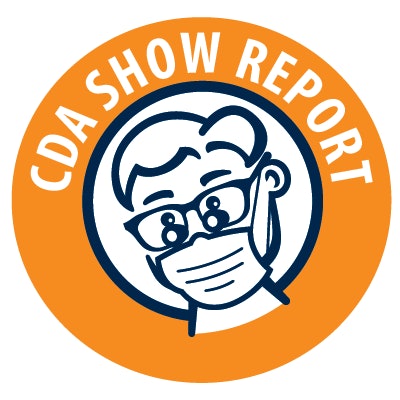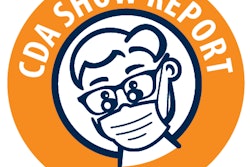
SAN FRANCISCO - A digital workflow can completely change how a practice operates, according to Larry Emmott, DDS.
Practices that use digital workflows, including electronic charting, find that accomplishing their day's work is more efficient. He gave an example:
 Larry Emmott, DDS.
Larry Emmott, DDS."If I have paper charts, part of my workflow in the morning is that I or someone on my team has to spend 15 or more minutes going through the files," he said. "We have to pull each paper file for the patients. Then we distribute them during the day from the front to the back, they get notes put on them, then back to the front, then at the end of the day we have to put them all back."
This process changes with electronic charting and a digital workflow.
"Once I have an electronic chart, there's no finding charts, no pulling charts, no getting charts from front to back," Dr. Emmott said. "Notes are done automatically, electronically."
Dr. Emmott practices in Scottsdale, AZ, and has a popular and informative newsletter titled Emmott on Technology. He spoke with DrBicuspid.com in advance of his September 7 presentation at the California Dental Association's CDA Presents 2018 meeting.
Office processes
A digital workflow refers to the nonclinical processes that occur in an office, according to Dr. Emmott.
"I am talking about everything from making an appointment to taking a payment to scheduling the next patient -- all this and more are part of the workflow," he said.
“In most offices, they didn't think the process through when they set them up and then the process has not evolved”
While all practices have a process, the difference is a digital workflow is more deliberate, he noted.
"What I find is that dental offices have processes, but it just kind of happened," Dr. Emmott said. "In most offices, they didn't think the process through when they set them up and then the process has not evolved."
A key element of digital workflow is that you go beyond doing things in the office, he explained. Practices can begin to use electronic services.
"I take what someone on my team used to have to do, and I buy that service as an electronic service," Dr. Emmott said.
A reminder service is a good example. Rather than having to check a schedule and call a patient, a reminder system looks into the data and sends the patient a text or email reminder.
4 steps
Four steps are involved when converting to a digital workflow, according to Dr. Emmott.
"Many practices are interested in trying it but are very frightened about the process," he said.
The four steps of going paperless start with paper and end up digital:
- A practice uses paper for its workflow.
- The next step is what Dr. Emmott calls the hybrid step. A practice has a computer in the office and uses it for some processes. The doctors may still be writing their notes on paper, which can be frustrating because finding information can be difficult, he noted.
- The third step is converting to paperless charts.
- The final step is using an entirely digital workflow.
The last step is where practices begin to do things differently and more effectively, Dr. Emmott said.
While many practices are curious, they generally encounter some barriers to adopting a digital workflow, he noted. One barrier is that practices and people have established systems and are reluctant to change something that works or that they think works.
For dental team members, the digital workflow change requires some adjustment and refocusing.
"I talk about the concept of an office technologist," Dr. Emmott said. "This is that team member or members who understand how to use technology as their first choice."
When team members have used only paper and then they are told to use digital records, they may view this change as a burden, whereas the technologist is a technology native, he explained. When a new app or a new system is added, the technologist can make it work.
"This is the dental team member of the future," he said.
When talking with team members about their future, Dr. Emmott said he's become more direct as the use of technology has increased.
"I tell staff members if you don't use and understand the computer, you won't be a staff member in the future," he said.

















